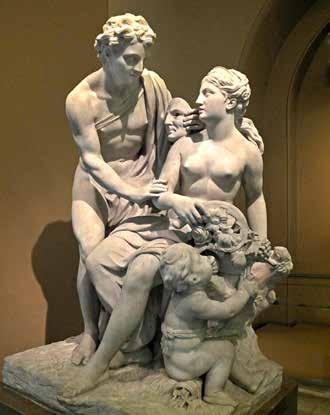
3 minute read
Gwil’s rant
Chair of the Archaeology and Heritage Group. GWIL OWEN ARPS.
By the time you read this the summer will be officially past, though, with some luck, we will all still be able to get out with our cameras and do what it is that we all do so well (I hope). I trust that many of you will have joined Rodney Thring at the Weald Museum, and added your images to our on-line presence. Do not forget our Members’ Showcase in October. Both the photographs, and the related discussions make this a vital part of our existence. At the last committee meeting we decided to explore the possibility of a group exhibition. We have seventy frames all waiting to be filled. Which of yours would you like to see on a wall? Also, if you know of a suitable venue near your home, please let us know. Every so often I, and George, our secretary, get a breakdown of all the online activity of the various group parts of the RPS’ website. Fascinating though this may be, it doesn’t help us much to learn why our members use the website. How about, just occasionally, dropping George or myself an email saying what you think of it all?
Let us know what you think Chair: Gwil Owen heritagechair@rps.org Secretary: George Backshall heritagesec@rps.org
Cultural heritage Cultural heritage has many facets. Broadly speaking it is whatever a society does in the present, with a view to handing it on to future generations, or preserves its inheritance from the past with the same objective. An Archaeologist studies past societies (recent and distant) through the medium of their remains and their traces in the landscape. An Anthropologist looks at modern societies - and of course their past as they express it now. Both can discover what societies have done, and how, and what people’s lives were and are. We explore this heritage now with our cameras. Our curiosity about the past is one gateway to understanding ourselves.
“Man knows himself only to the extent that he knows the world.” (Goethe)
Heritage can also be considered from the point of view of what we bequeath to the future. Particularly in modern western societies it is a matter of principle that the past should be preserved as a valuable asset for our descendants. We know their lives will be the better for having our knowledge and understanding to guide them. However some other societies, now and then, do, and did not consider the distant future, preferring to keep in the here and now those things and ideas which are valuable. Our society, centuries hence, may hold the past to be of no use or little interest. It will be their choice. We might bear this in mind before hubris strikes us down. As a group we have some influence in this general conversation.
How can/should we exercise it? Well, for a start, blind enthusiasm just doesn’t cut it. Our future audience can assume that enthusiasm, but unless an image has precise clues as to why we felt that way it is useless.
How to do this? Analyse the subject and use the basic photographic techniques (viewpoint, lighting, timing) to pass on a precise message. Of course this is “Photography 101” as the Americans would have it. The really difficult bit is the self analysis which explains why you really like the bits that you consider important. For what it’s worth, my own experiences dealing with creative artists have shown that the better the artist the more they understood the details of their own motivation. Give it a try. Have fun.
GWIL OWEN ARPS





